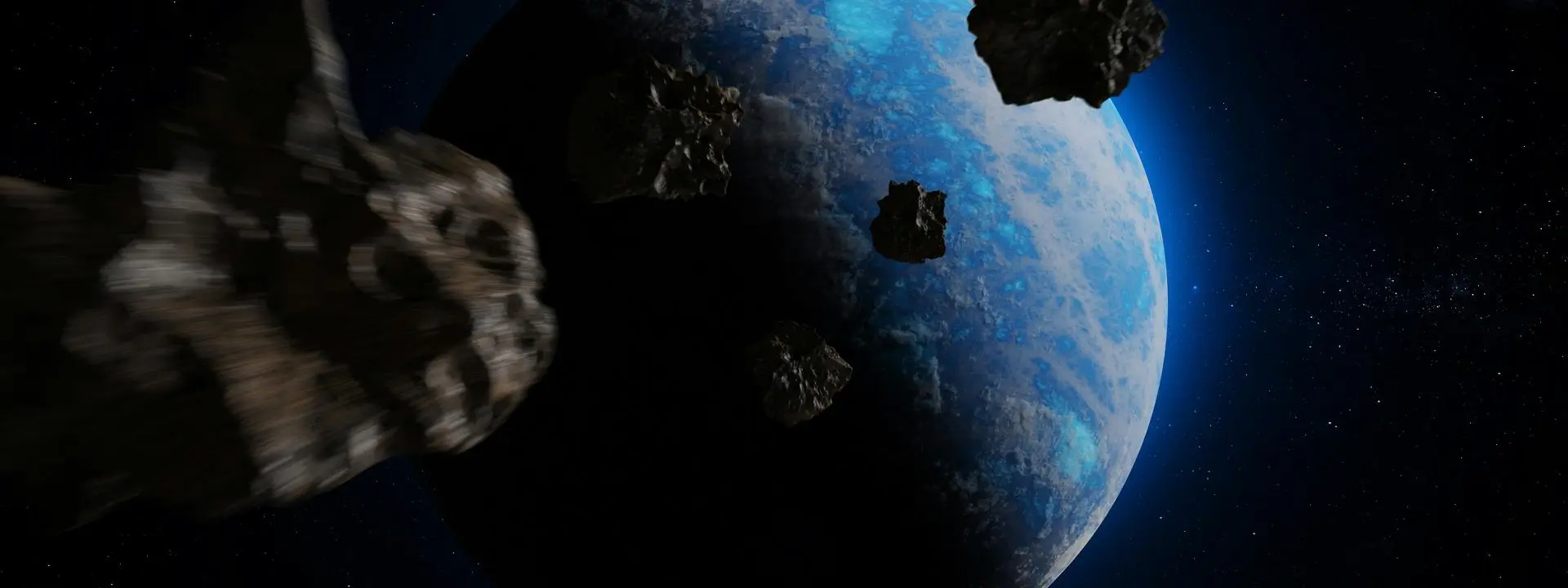Scientists find proof that an asteroid hit the North Sea over 43 million years ago

A decades-long scientific debate over the origins of the Silverpit Crater in the southern North Sea has been resolved.
New evidence confirms that it was caused by an asteroid or comet impact around 43-46 million years ago.
A team led by Dr Uisdean Nicholson from Heriot-Watt University in Edinburgh, funded by the Natural Environment Research Council (NERC), used seismic imaging, microscopic analysis of rock cuttings and numerical models to provide the strongest evidence yet that Silverpit is one of Earth’s rare impact craters.
Their findings are published in Nature Communications.
New data ends longstanding controversy
The Silverpit Crater sits 700 metres below the seabed in the North Sea, around 80 miles off the coast of Yorkshire.
Since its discovery in 2002, the three-kilometre-wide crater, which is surrounded by a 20 km-wide zone of circular faults, has been at the centre of a heated debate among geologists.
Initial studies suggested it was an impact crater. The scientists who found it pointed to its central peak, circular shape and concentric faults, characteristics often associated with hypervelocity impacts.
However, alternative theories argued that the crater structure was caused by salt moving deep below the crater floor or the collapse of the seabed because of volcanic activity.
In 2009, geologists put the crater’s formation to a vote, as reported in that year’s December issue of Geoscientist magazine - a majority voted against the impact crater hypothesis.
New evidence has proved them wrong.
A 160-m wide asteroid hit the North Sea
The Heriot-Watt-led team used newly available seismic imaging data and evidence from below the seabed to prove the impact theory.
Dr Uisdean Nicholson, a sedimentologist in Heriot-Watt University’s School of Energy, Geoscience, Infrastructure and Society, said: “New seismic imaging has given us an unprecedented look at the crater.
“Samples from an oil well in the area also revealed rare ‘shocked’ quartz and feldspar crystals at the same depth as the crater floor.
“We were exceptionally lucky to find these - a real ‘needle-in-a-haystack’ effort. These prove the impact crater hypothesis beyond doubt, because they have a fabric that can only be created by extreme shock pressures.”
100-metre high tsunami
Dr Nicholson said: “Our evidence shows that a 160-metre-wide asteroid hit the seabed at a low angle from the west.
“Within minutes, it created a 1.5-kilometre high curtain of rock and water that then collapsed into the sea, creating a tsunami over 100 metres high.”

Finding ‘the silver bullet’
Professor Gareth Collins from Imperial College London was at the Silverpit Crater debate in 2009 and also provided the numerical models for the new study.
Professor Collins said: “I always thought that the impact hypothesis was the simplest explanation and most consistent with the observations.
“It is very rewarding to have finally found the silver bullet. We can now get on with the exciting job of using the amazing new data to learn more about how impacts shape planets below the surface, which is really hard to do on other planets. ”
Rare and exceptionally-preserved
Dr Nicholson said, “Silverpit is a rare and exceptionally preserved hypervelocity impact crater.
“These are rare because the Earth is such a dynamic planet - plate tectonics and erosion destroy almost all traces of most of these events.
“Around 200 confirmed impact craters exist on land, and only about 33 have been identified beneath the ocean.
“We can use these findings to understand how asteroid impacts shaped our planet throughout history, as well as predict what could happen should we have an asteroid collision in future.”
The confirmation of Silverpit as an impact crater places it alongside structures such as the Chicxulub Crater in Mexico – linked to the mass extinction of the dinosaurs – and the Nadir Crater off West Africa, which was recently confirmed as an impact site.
The research was funded by the Natural Environment Research Council (NERC), full project details are available online.